Fishing is a sport of studying and evolving. Each ability and method in your arsenal is an adaptation for situational necessity that makes you a greater angler. Listed here are 16 tried-and-true tips from the annals of Salt Water Sportman’s 86-year historical past of serving to folks catch extra fish. Whether or not you’re a newbie or an outdated salt, there must be one thing right here for you.
Chris Malbon
Gaff Like a Professional
Maintain the gaff behind the chief to forestall tangles and break-offs when you miss. Attain the gaff hook-down throughout the again of the fish and intention for the higher shoulder simply behind the gill plate to regulate the fish and reduce injury to the meat. Pull the gaff firmly into the fish and use the momentum to raise and swing it into the boat in a single transfer. If a fish is spiraling slightly than operating alongside the boat, hit it when it’s headed towards the boat.
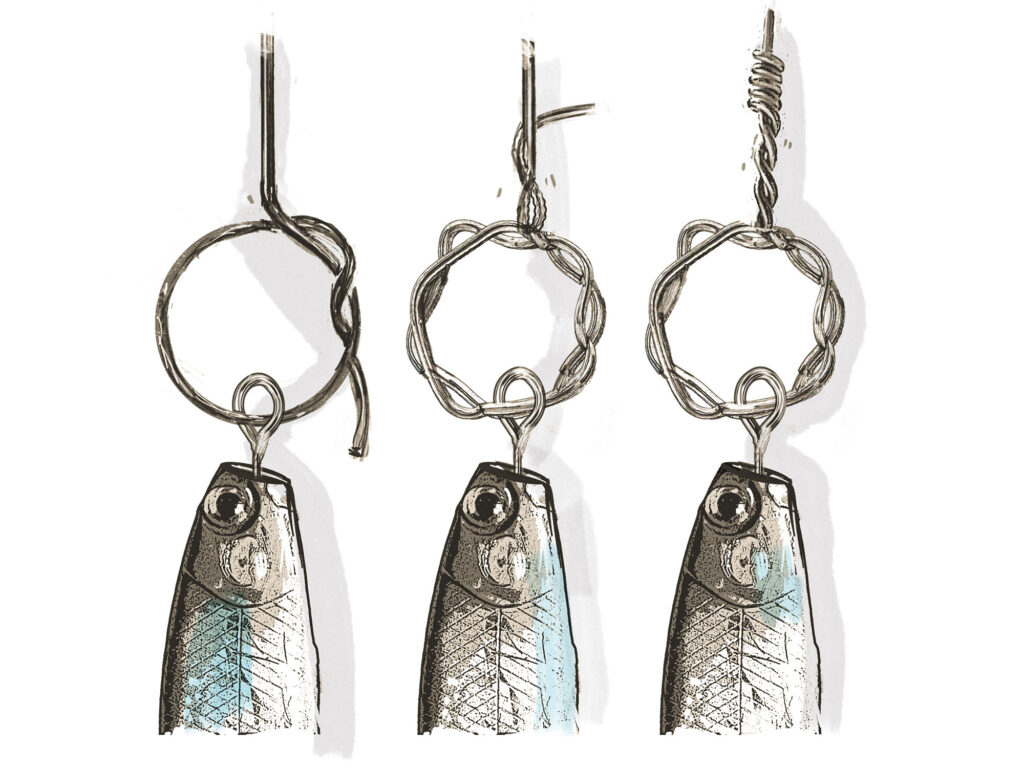
Chris Malbon
Construct a Wire Loop
Toothy critters require wire leaders, however single-strand wire loops collapse and inhibit the motion of lures. Rigging a bolstered wire loop permits the lure to swing freely. To do that, kind a loop by means of the lure eye, then wrap the wire round itself quite a few occasions, persevering with across the authentic loop to the start line. Then place the 2 strands on the high to start a haywire twist. End the haywire twist and break off the tag finish.
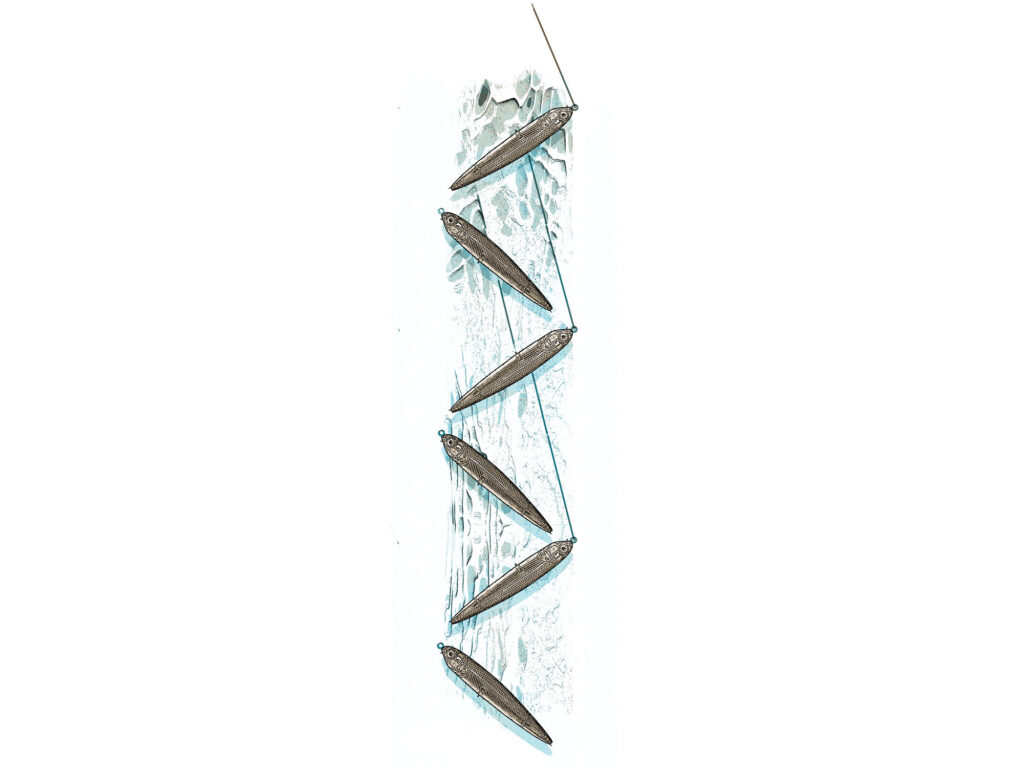
Chris Malbon
Take the Canine for a Stroll
The zigzagging motion of a strolling topwater lure is irresistible to quite a few species. The back-and-forth lateral actions and pauses of the method maintain the lure over the fish longer whereas mimicking a frantic baitfish. To stroll the canine, give the rod tip a brief, sharp jerk after which permit the lure to journey sideways on slack line. The following jerk will flip it to journey sideways within the different path. Begin slowly till you get a really feel for the timing. As soon as you discover the rhythm, it turns into second nature.
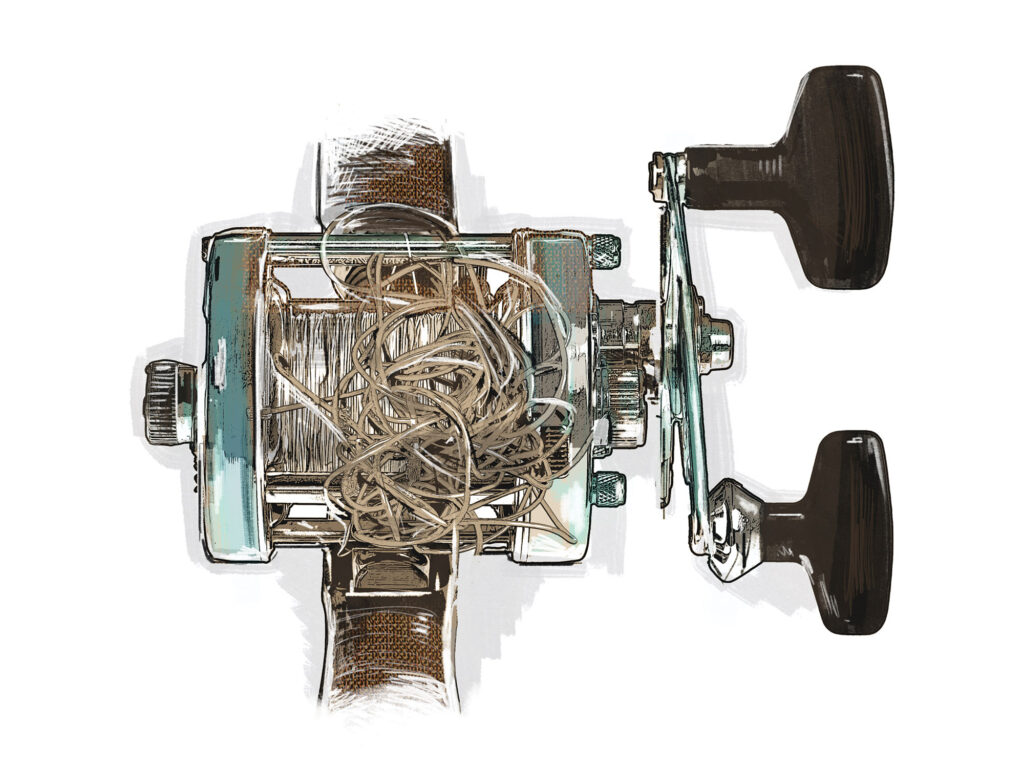
Chris Malbon
Beating Backlash
Some anglers keep away from baitcasters for concern of the dreaded fowl’s nest. By adjusting spool stress and braking, even newbies can tune a reel to make lengthy, correct casts with out tangles. Begin with the strain knob on the proper facet of the reel tightened. With the lure tied on and the rod held in entrance of you, depress the free-spool button. Loosen the strain knob till the lure falls steadily underneath its personal weight. Correctly adjusted, the spool ought to cease spinning when the lure hits the bottom. The braking system on the left facet plate is for fine-tuning. Longer casts are doable with much less stress, however that opens the door for backlashes. Alter the braking dial to the next setting to account for decreased stress on the spool. With follow, you’ll be capable to loosen issues up considerably and management casts by feathering the spool along with your thumb.
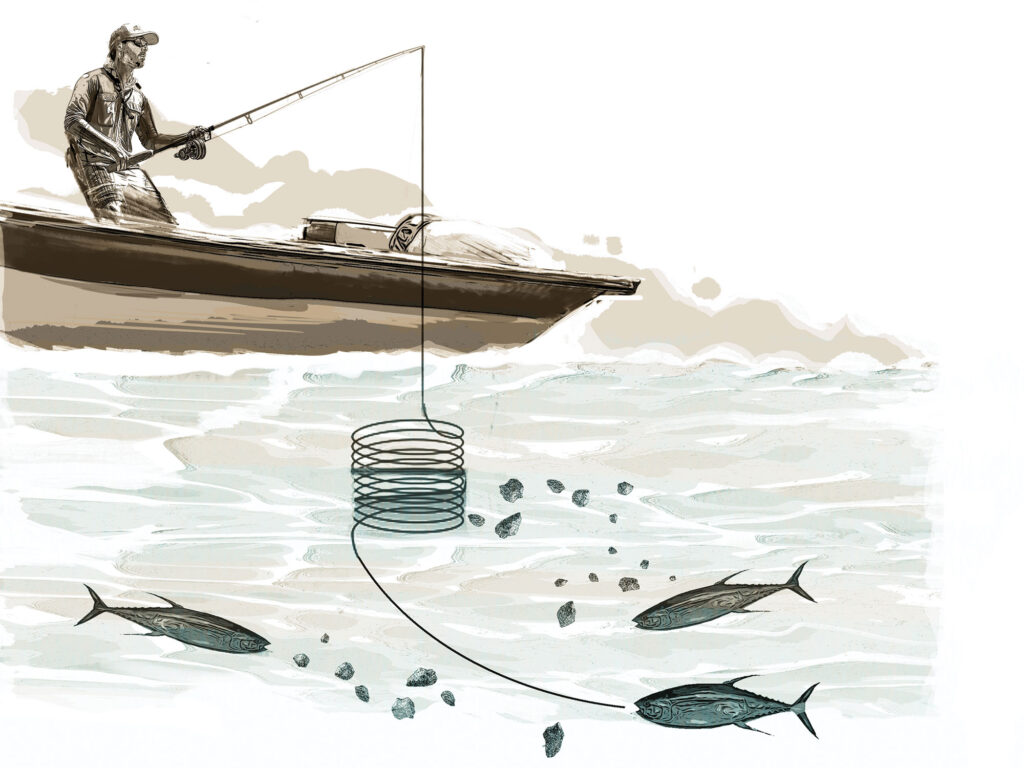
Chris Malbon
Drift a Chunk
Pulling actively feeding fish out of a friend line would possibly appear to be a simple endeavor, however some fish grow to be selective when minimize bait is falling from the sky. A pure drift is essential when deploying a bit with a hidden hook to make it seem like free meals. To do that, pull the road from the rod tip and run it underneath the index finger of your rod hand, dropping coils of slack line on the water through the drift. The hooked chunk will drift extra naturally with out resistance from the reel or rod guides. When these coils of line disappear off the floor, launch the road out of your index finger and put together for battle.
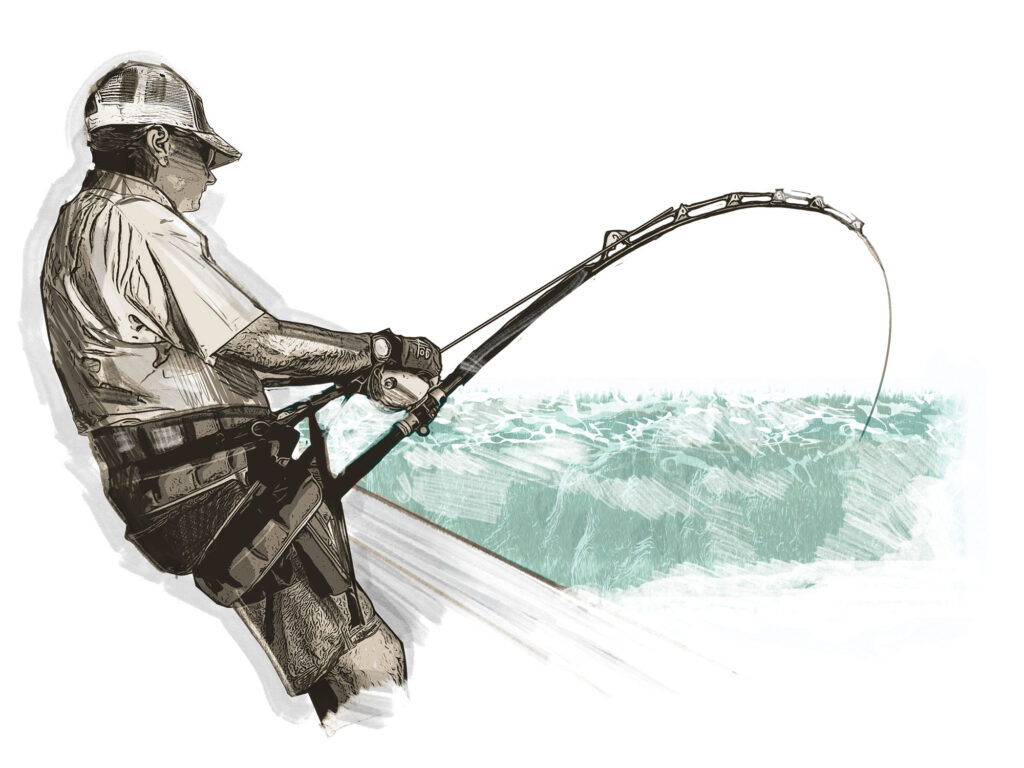
Chris Malbon
Stand Up and Struggle
Stand-up gear gives a hard and fast anchor level for the rod butt and permits the angler to make use of their total physique, slightly than simply their higher physique, to battle fish extra effectively. It’s the identical acquainted pump-and-wind movement, however the gimbal belt and kidney harness function a fulcrum the place the angler’s leverage comes from the legs and core. The angler bends on the knees and pulls with the arms to raise the rod tip up and put stress on the fish. Then, whereas straightening the legs and reducing the rod tip, the angler reels exhausting to achieve line. Get right into a rhythm and also you’ll uncover it’s a lot simpler to struggle a fish along with your entire physique than it’s with simply your arms and again.
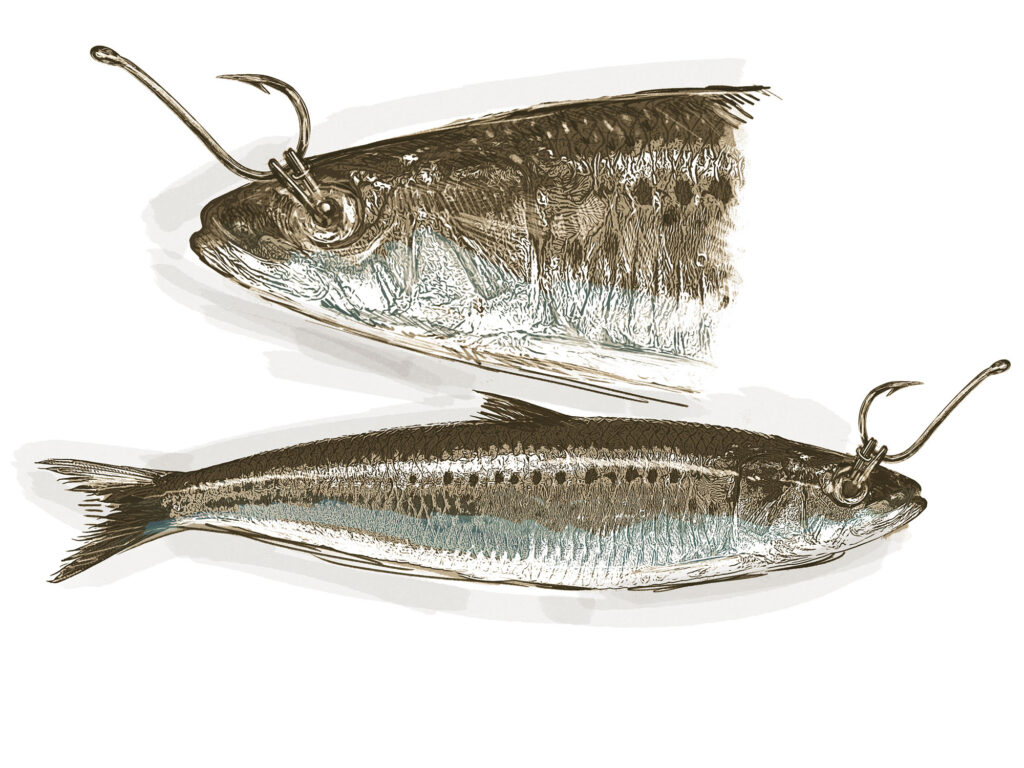
Chris Malbon
Bridle a Stay Bait
Steal some orthodontic rubber bands out of your brace-faced teenager (for smaller baits) or purchase some purpose-made rigging bands. Use an open-faced rigging needle to string the rubber band by means of the bait. Run it by means of the attention sockets of goggle-eyes, small tuna or bonito, by means of the nostrils of smaller baits like tinker mackerel and threadfin herring, or simply in entrance of the dorsal fin, relying on the applying. Cross the hook level by means of the 2 rubber-band loops on both sides of the baitfish and take away the rigging needle. Then spin the hook a couple of occasions to comfortable it all the way down to the baitfish, and go the hook level by means of the tight area between the bait and bridle to maintain it from unraveling. Bridled baits keep energetic longer, and the hook is absolutely uncovered for higher hook-sets.
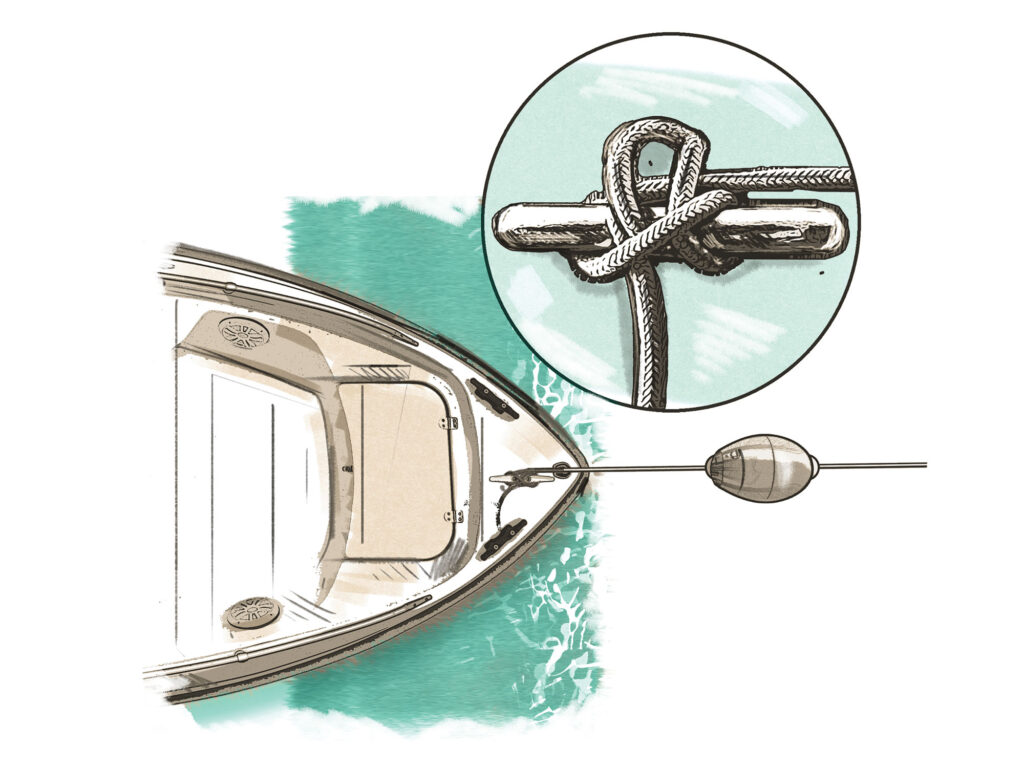
Chris Malbon
Rig a Fast-Launch Anchor
Within the age of trolling-motor digital anchors and shallow-water anchoring programs, a manually deployed quick-release anchor would possibly appear to be a relic. But anglers who pursue giant, shallow-water fish know there’s a spot for an old style quick-release anchor that permits for quick getaways to observe hooked fish. Use a quick-release cleat hitch to safe the anchor line to the boat and thread a buoy on the rode between two stopper knots. After you’ve chased down that massive tarpon or shark, you’ll be able to return to the identical spot and your anchor can be ready for you.
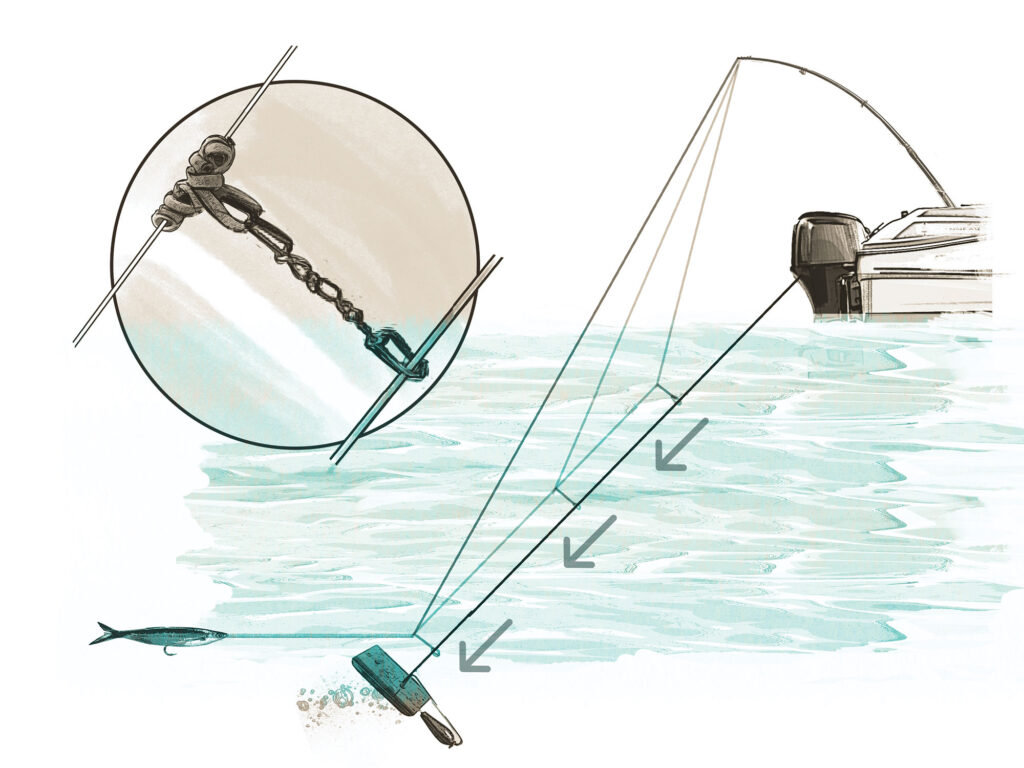
Chris Malbon
Troll Deep With a Planer
A planer is an easy technique to troll baits or lures deeper when the floor chunk isn’t occurring. Whereas idling ahead, set the planer to the specified depth secured with 300-pound-test mono tied off to a transom cleat. Drop your bait again after which safe a rubber band to the fishing line with a Prusik knot. Clip a double snap swivel, one facet to the rubber band loop and the opposite to the planer tether. The drag from the water will pull the bait all the way down to the depth of the planer, and the rubber band will break off the primary line when a fish hits.
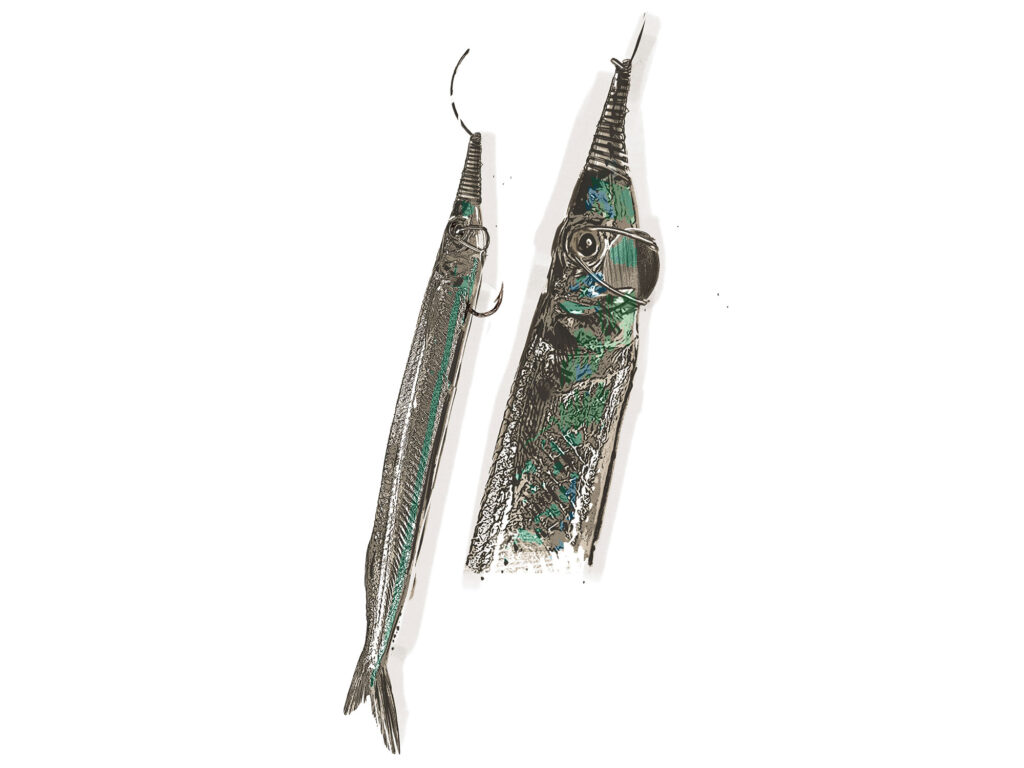
Chris Malbon
Rig a Swimming Bait
Swimming baits have a pure swimming motion in your trolling unfold, and you may make them out of ballyhoo, mullet and different baitfish. Place the hook as you’ll when rigging a skip bait, however an inch farther again, behind the attention sockets. Thread an egg sinker on the chief and slide it all the way down to the bait. Subsequent, run copper wire by means of the attention socket and use it to comfortable the burden underneath the chin. Bind the chief into the jaws with wire.
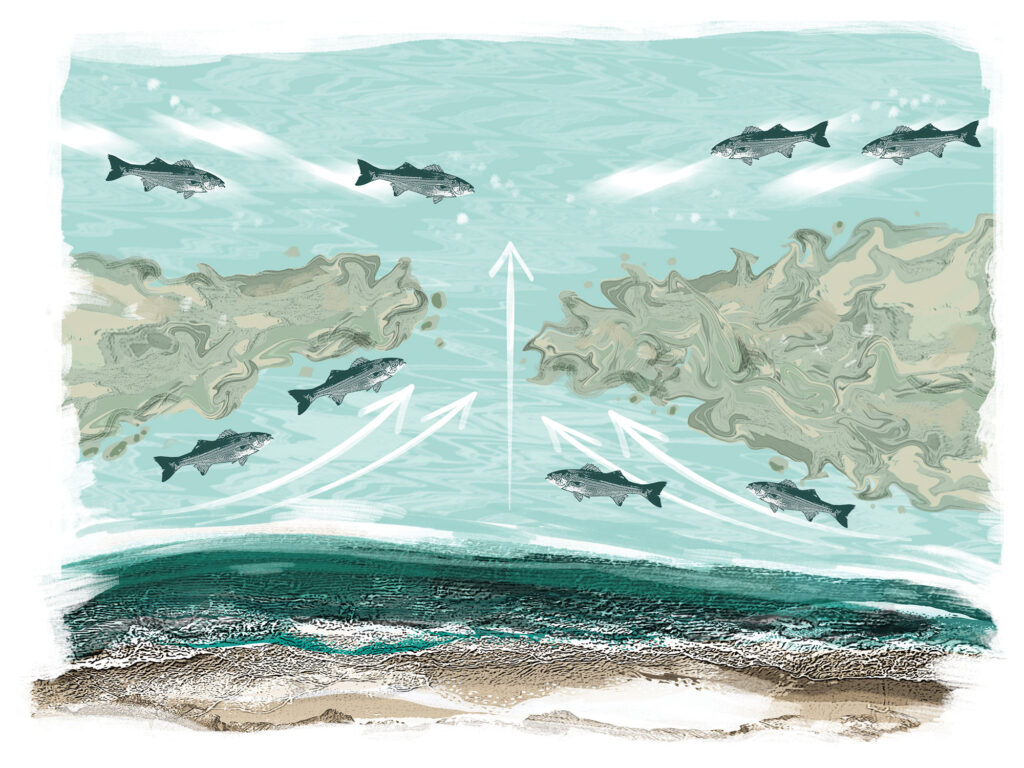
Chris Malbon
Learn Any Surf
The principle aspects to studying the sand surf is to determine deep water and shallow water. The sandbar is the place you see waves break and whitewater the place it’s shallow. Deeper water the place fish often stage is within the cuts between sandbars and within the slough/undertow space inside alongside the surf line, recognized by noncrashing waves. Typically, fish stage within the deeper space and simply contained in the sandbar. If there are rocks within the deeper water, gamefish will localize there much more. Low tides permit anglers to wade on the sandbar and forged out farther into the ocean. —Nick Honachefsky
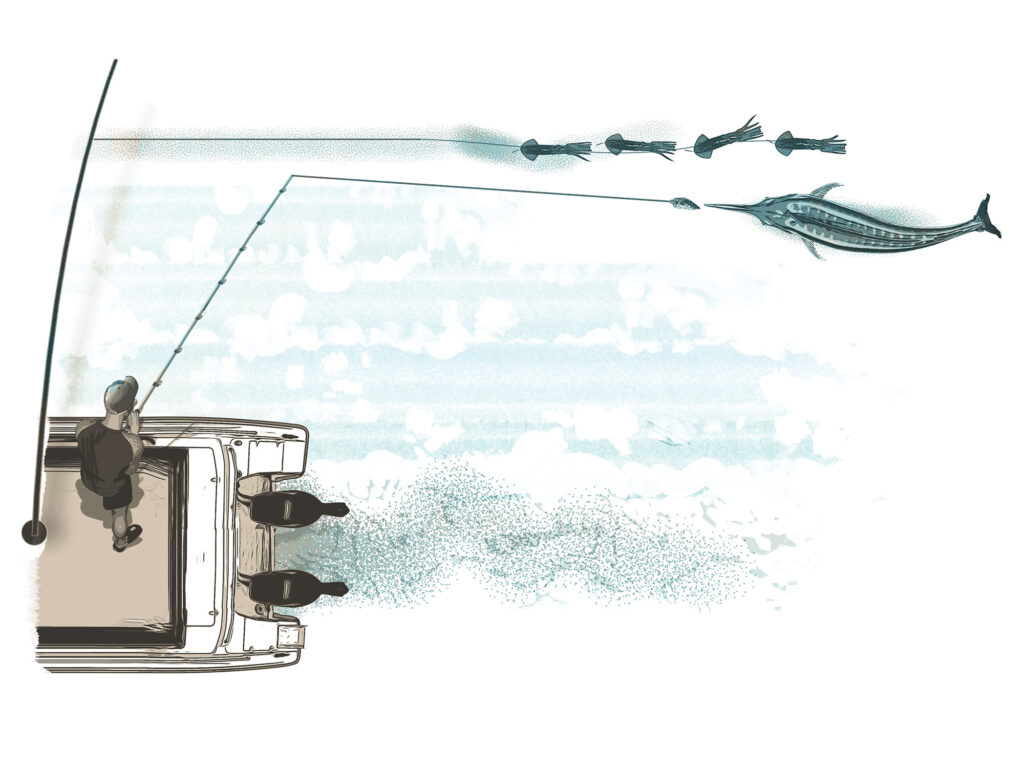
Chris Malbon
Pitch Excellent
Trolling teasers will increase the visibility of an offshore unfold, however when a fish houses in on a daisy chain slightly than a bait with a hook, it’s time for the angler to get within the motion. At all times maintain a pitch bait rigged and prepared. When a fish comes up on a teaser, drop within the pitch bait and let it drift again to the trailing fish. Billfish and different massive recreation usually activate this simpler prey merchandise. On the preliminary strike, be able to feed the fish by liberating the spool and fingering it frivolously to forestall backlash. When the fish takes the bait and turns, ease the drag lever ahead, wind down and maintain on.
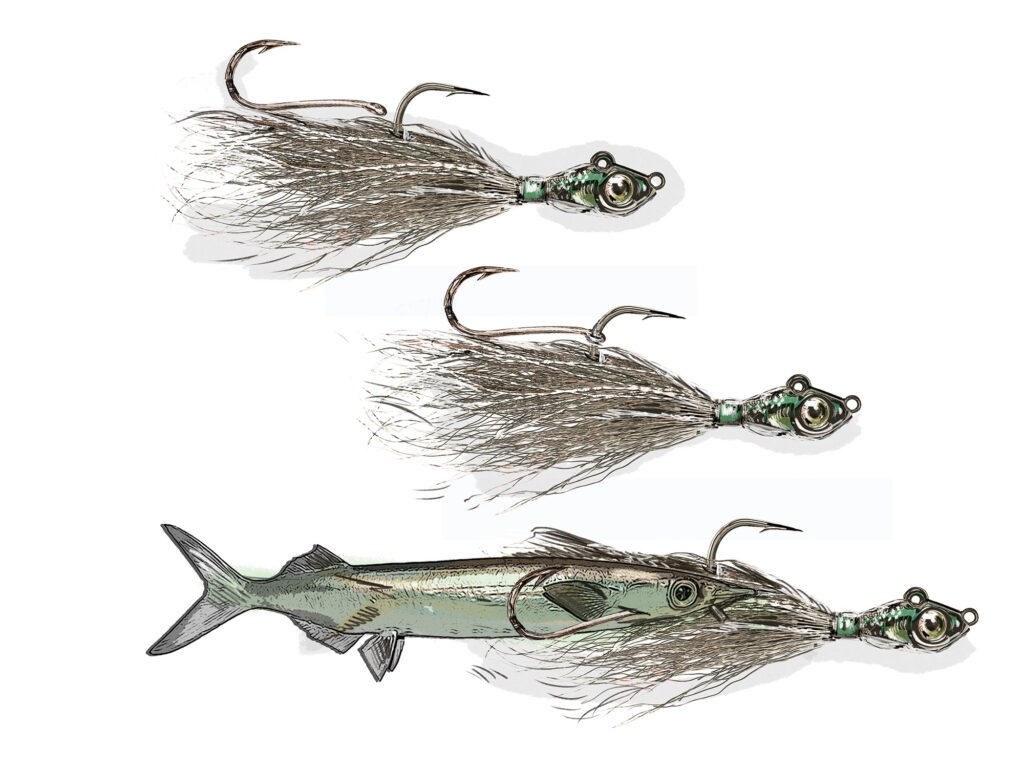
Chris Malbon
Tandem-Hook a Bucktail
Bucktails catch virtually all the things that swims, and including a useless bait to your jig is an added enticement. However what do you do when brief strikers are stealing your bait? Add a trailer hook. Slide a second hook eye over the jig hook, pointing up, and open the attention barely with pliers if mandatory. Run the jig hook by means of the top of the bait and the trailer hook although the physique. Make certain the bait pulls from the top so it runs straight whereas deep-jigging or casting.
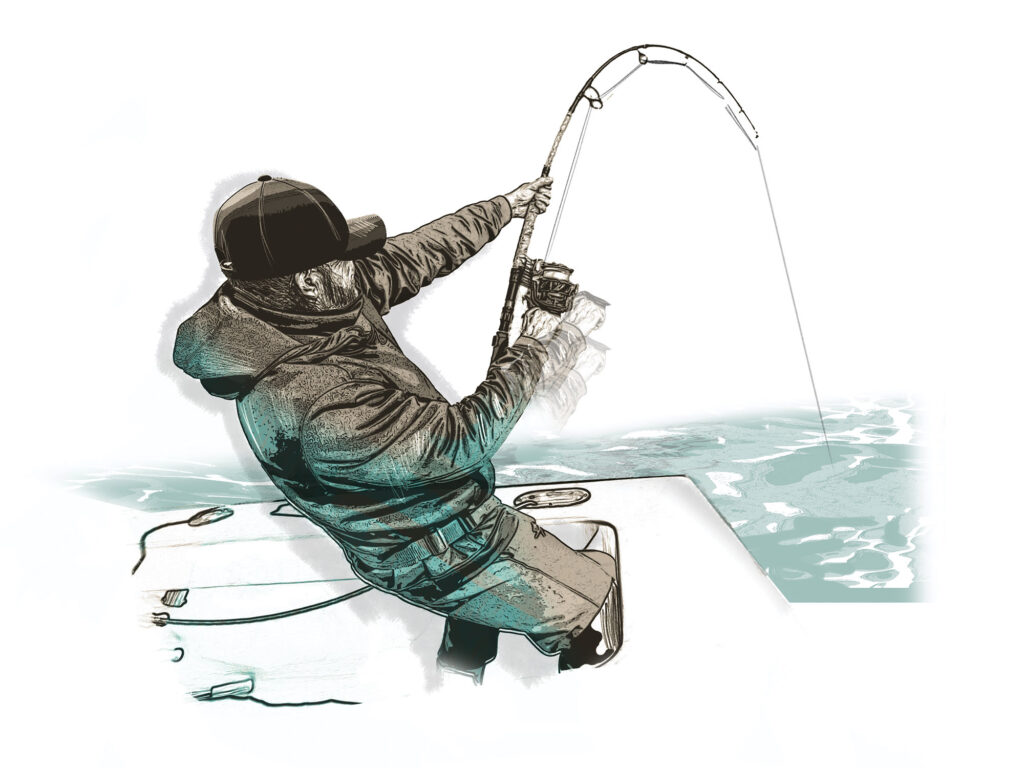
Chris Malbon
Don’t Be a Drag
Reeling in opposition to the drag whereas fishing with a spinning reel can result in extreme points, comparable to line breakage, line twists, wind knots or shedding your catch. When a fish pulls, the drag system is designed to launch line easily, stopping line breakage or rod injury. By permitting the drag to operate as supposed, you keep management and improve your possibilities of efficiently touchdown the fish with out creating future line points. —Capt. Michael Okruhlik
Learn Subsequent: Tricks to Assist You Land Fish Sooner
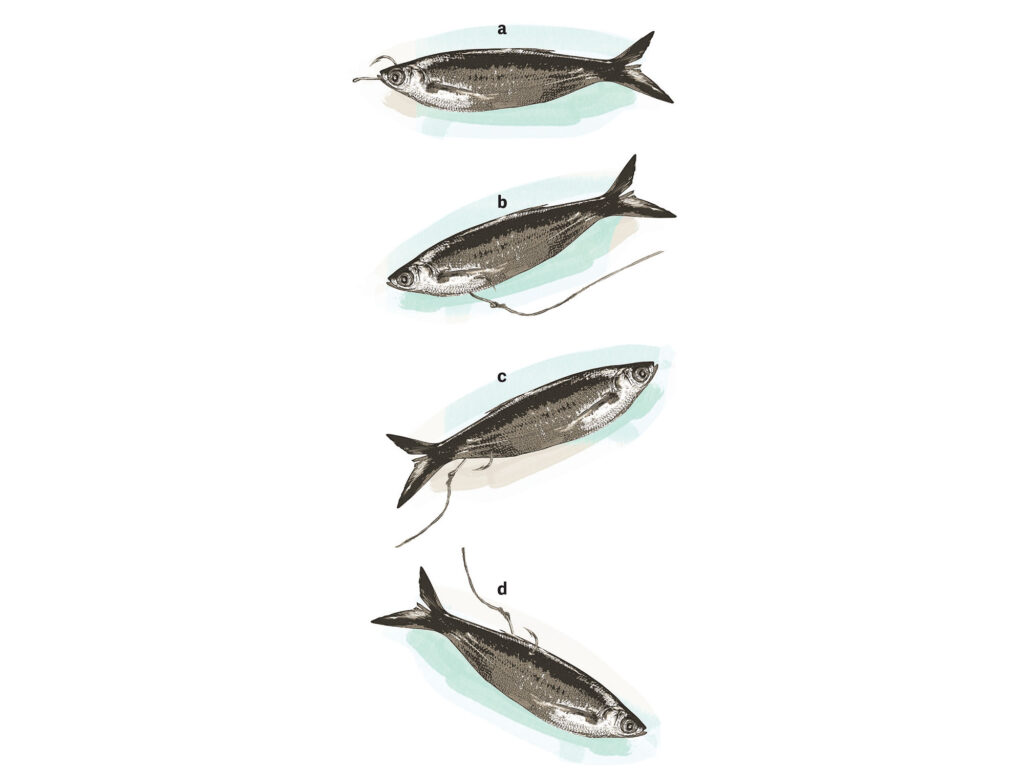
Chris Malbon
Steer a Stay Baitfish
A. The Higher Jaw: The default technique for hooking a dwell baitfish for a lot of functions is within the mouth by means of the higher jaw. This permits freedom of motion and sometimes retains the bait alive for an extended interval.
B. Make ’Em Swim Down: A free-lined dwell bait typically goes the place it desires, however it may be steered. When fish are down within the water column and also you don’t wish to add weight, hook the bait low and ahead. This hook placement encourages a bait to swim deeper.
C. Make ’Em Swim Up: When fishing on backside with a weighted setup like a fish-finder rig, a baitfish struggling to swim up will get lots of consideration from predators. That’s precisely what it does when hooked close to the underside of the tail.
D. By the Dorsal: One other technique to pressure a baitfish to swim down is by hooking it by means of the again in entrance of the dorsal fin. Below a kite or float, the bait will swim down frantically in opposition to the stress of the road.
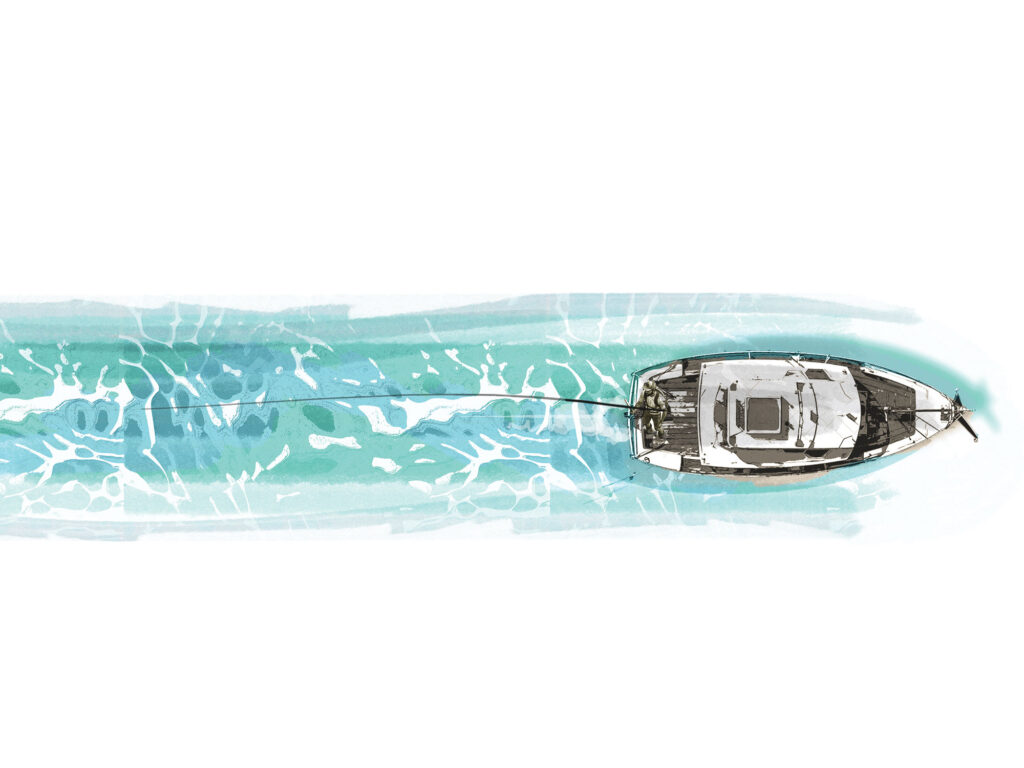
Chris Malbon
Cease Line Twist
Spinning reels add a small quantity of twist to the road each time the bail turns. Over time, amassed twists make line troublesome to handle. To take away twist from the road, minimize off the terminal deal with, open the bail, pull line off the spool, and feed it out by means of the rod eyes from a transferring boat or into a robust present from shore. The road will start pulling itself off the reel as soon as a portion of it’s within the water. Pay out extra line than you’ve been fishing with and let the friction of the water untwist the road. You’ll be able to rerig after a couple of minutes.



















